The Field Vole (eating a hazel nut).
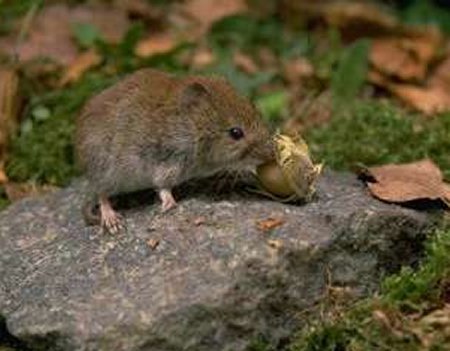
UNWISE! The sapling is fitted with a mulch
mat and is surrounded by long grass. Ideal for Field Voles, which
find protection from hawks and owls under the mat. Here it makes
a nest, and can chew right through a tasty sapling trunk, or attack
the roots.
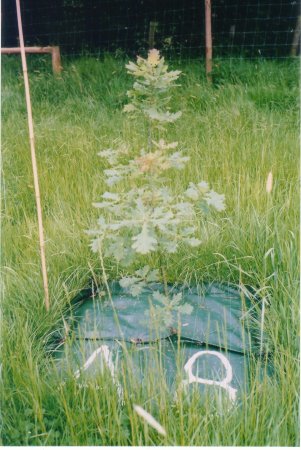
The VOLE threat
In October 2004 we lost 15 of our best saplings, found horizontal
as though bitten through by a beaver. This was caused by field voles,
we have heard their high-pitched squeak in the long grass and sometimes
saw one.
They made
their nests under the mulch mats we had fitted to all saplings. Often
the mat was damaged, as a fox tried to get at the nest. Houston
we have a problem.
Quickly, we removed all the mulch mats, hoed a bare patch of earth round each sapling, and treated the long grass round the bare patch with herbicide. Also two kestrel boxes and two owl boxes were mounted in large trees in the nearby hedgeline. The idea was to deter the vole from leaving the cover of the grass and exposing itself to predators. Two years on, we have lost no more saplings in this way.
Voles have a 4-year breeding cycle. 2004 was a prolific year, and we expect a lot of voles in 2008. This year, 2006 we have not seen or heard one. No voles means little food for hawks, and in 2006 we had no kestrel or owl chicks in our 4 boxes either.
The bare earth patches need to be hoed regularly, the best types of
hoe are the Draw hoe in summer when the earth is hard and the cultivator in spring when it is soft. Hoeing 300
trees at least once a week is a bit of a chore, but if I can do it
so can you...
Angled hoe |
Cultivator hoe |
Draw hoe |
Duo hoe |
Double hoe |
SENSIBLE. The well-hoed bare earth and outer ring of herbicided grass keeps the vole away from the sapling stem. Glyphosate was used, which takes 2 weeks to act.
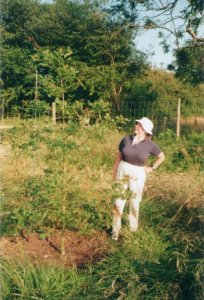


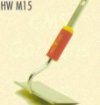
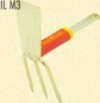
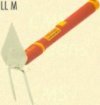
 All Rights Reserved.
All Rights Reserved.